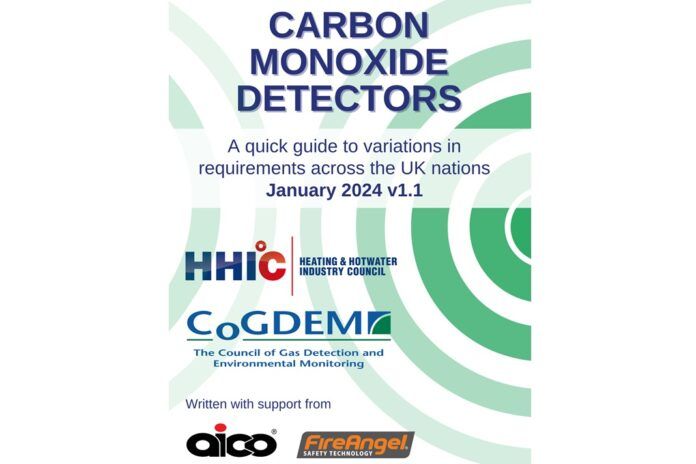
The Heating and Hotwater Industry Council (HHIC) and the Council of Gas Detection and Environmental Monitoring (CoGDEM) have launched a guide on carbon monoxide (CO) detector requirements across the UK.
According to a statement, variation in CO legalisation across the England, Wales, Scotland and Northern Ireland potentially opens the door to confusion among engineers. The guide has been launched to provide the best practice for each region, it cited.
Property owners, including private and social landlords, must ensure that CO detectors are present in each property in the appropriate locations and in accordance with legislation and related guidance, it noted.
To help prevent further confusion around a number of potential issues, the guide highlights the differing requirements including the number of CO detectors required in a property, the batteries that must be used and the position that detectors must be installed.
Kevin Lowe, technical manager of the HHIC, said: “Following the changes to CO legislation made throughout the UK in the past year, it’s crucial that heating engineers are aware of the different obligations across England, Wales, Scotland and Northern Ireland.
“It’s just as important that this information is easily accessible, which is why we have released a quick guide to help engineers, landlords and property owners easily understand the regulations they must adhere to.”
The guide also features the standards placed upon social and private landlords that differ across the UK’s nations. This includes the level of responsibility placed upon landlords for the repair and replacement of CO detectors, in addition to the need to provide detectors and information regarding use and testing to their tenants.
Andy Curtis, director of CoGDEM, added: “While every social and private landlord must make sure that CO detectors are installed and operating correctly at each of their properties, there may still be confusion around the extent of their responsibility of repairing, replacing and testing detectors. Our guide has been created to put this uncertainty to rest and ensure safety in properties across the UK.”
